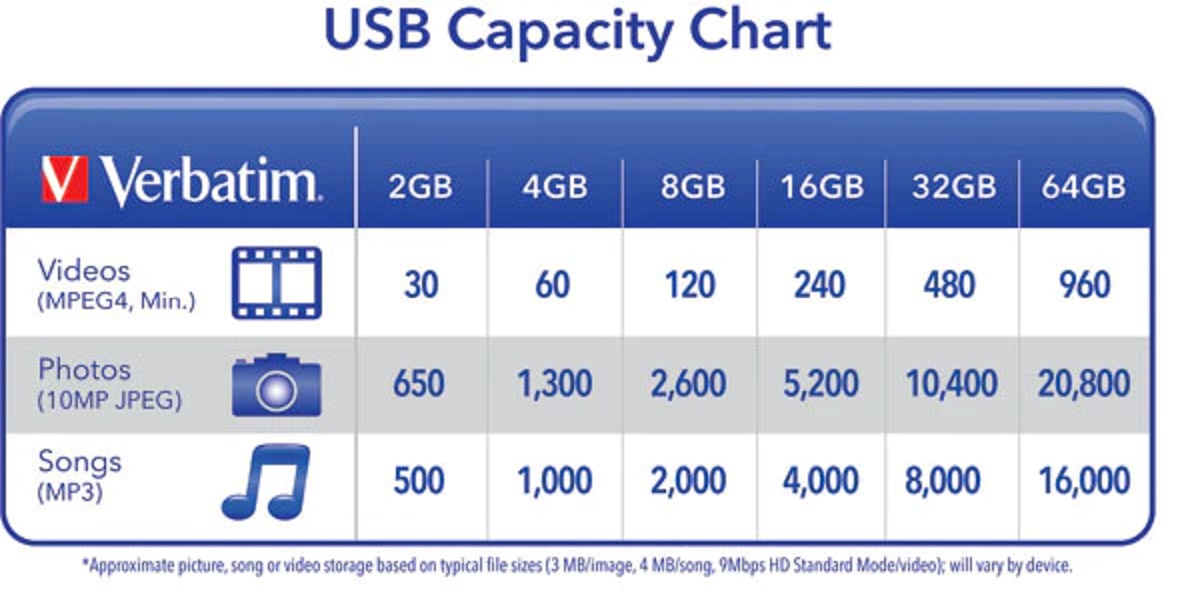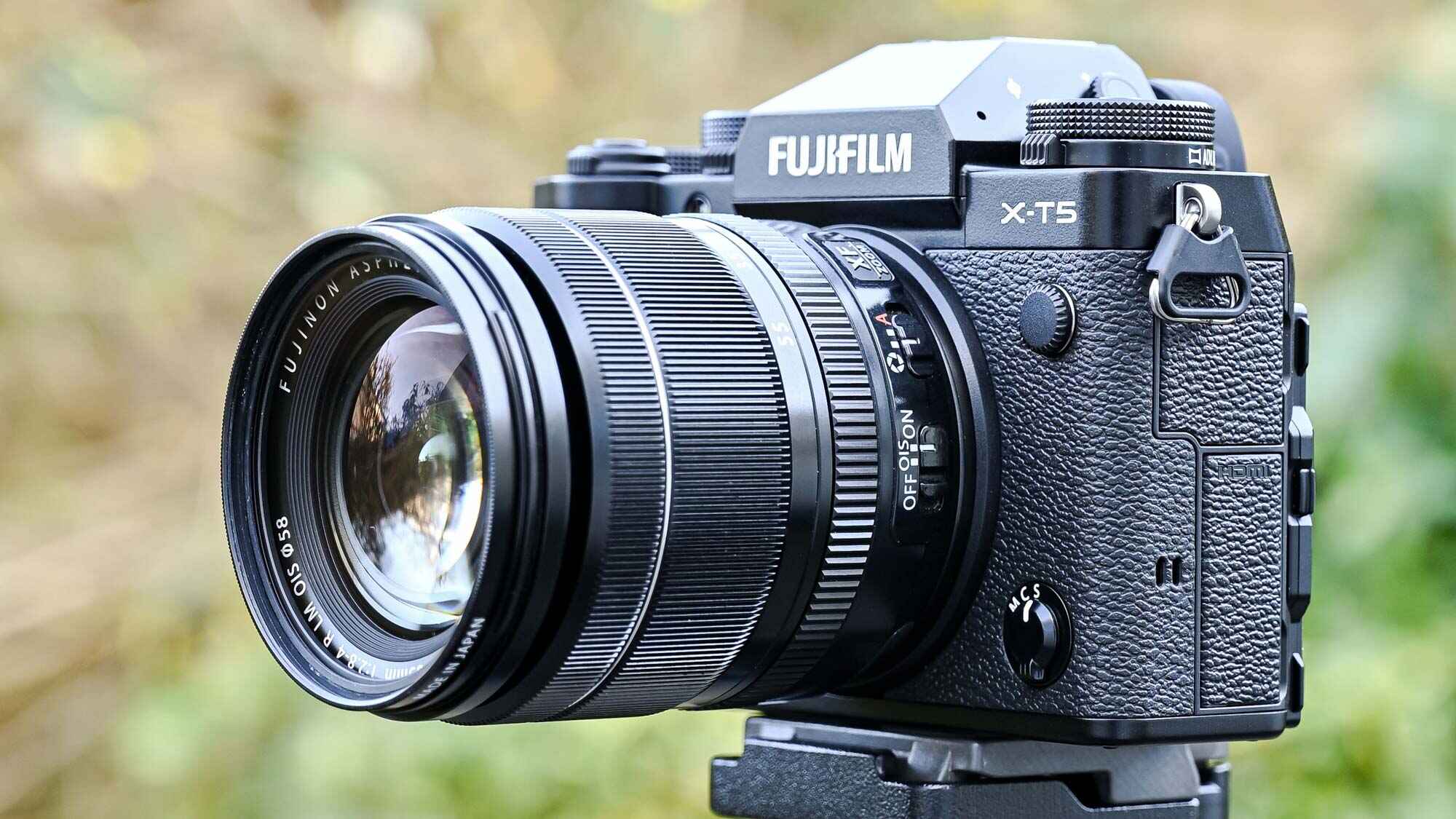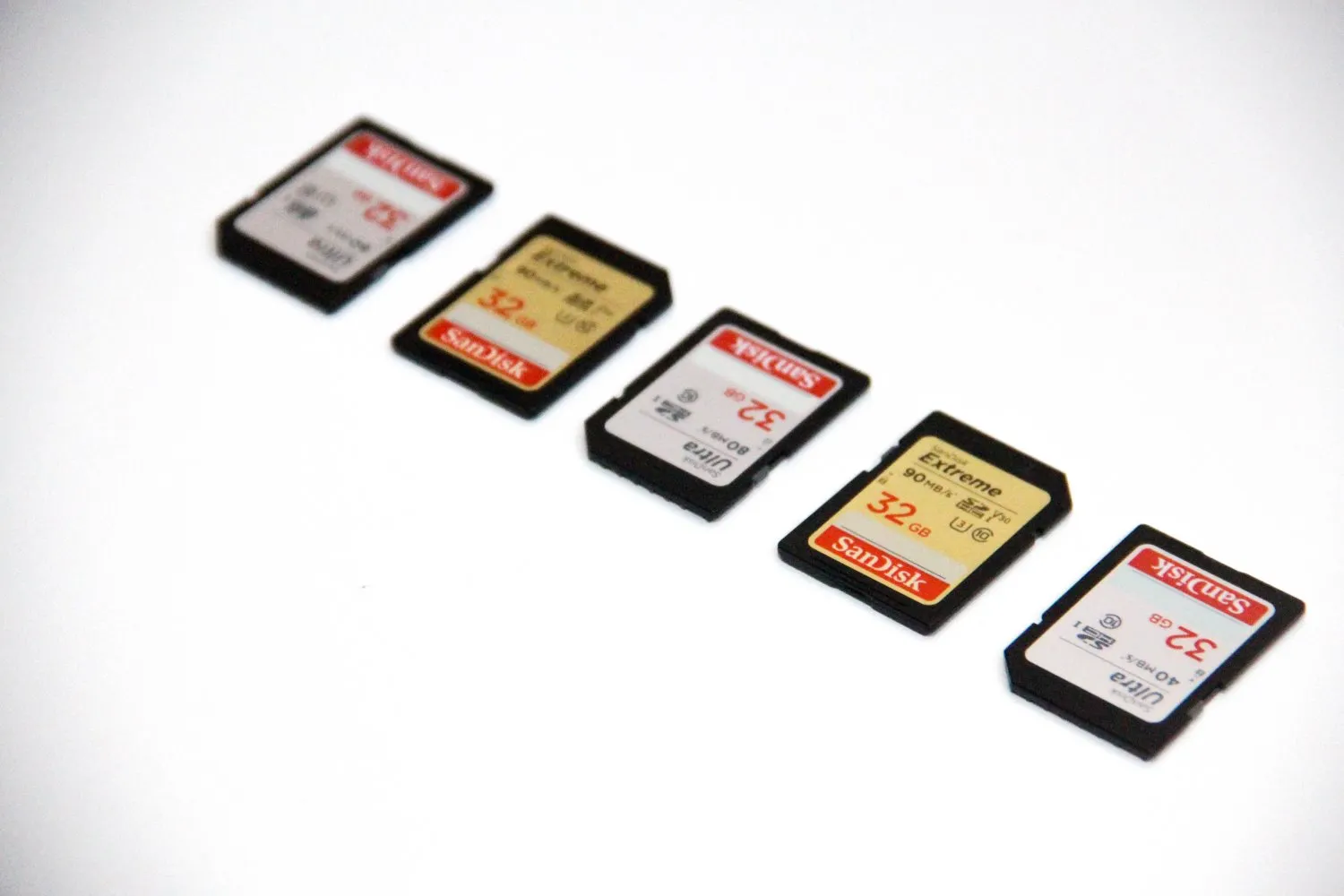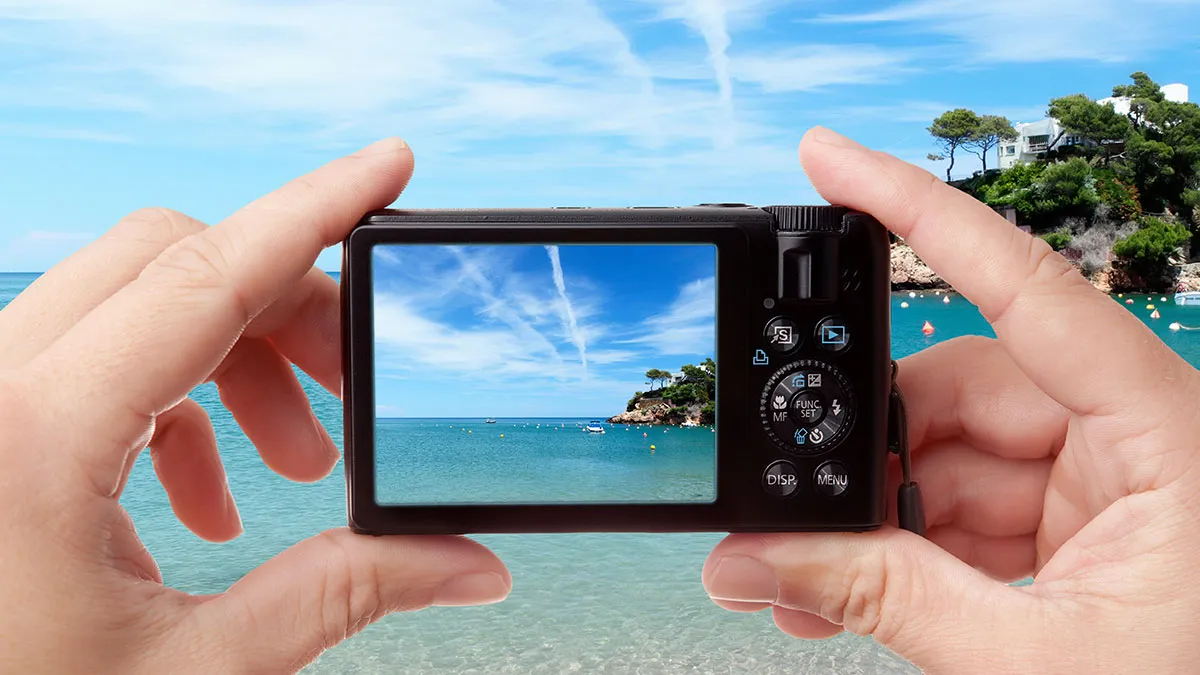Introduction
Welcome to the world of digital photography! In today’s digital age, we capture countless moments with our cameras and smartphones, resulting in a vast collection of digital photos. While the convenience and ease of digital photography have revolutionized the way we capture memories, it is crucial to understand the importance of photo size.
When we talk about the size of a digital photo, we are not referring to its physical dimensions, but rather to the file size and dimensions of the image. The file size determines the amount of storage space a photo occupies on a device, while the dimensions determine the width and height of the image when displayed or printed.
In this article, we will delve into why the size of a digital photo matters, how to determine its dimensions and file size, and provide some tips for resizing and optimizing your photos. Whether you are a professional photographer or an amateur enthusiast, understanding these concepts will help you properly manage and share your digital photo collection.
So, let’s dive in and unlock the secrets of determining the size of a digital photo!
Why is the size of a digital photo important?
The size of a digital photo holds significant importance for various reasons. Understanding the impact of photo size can help you make informed decisions when it comes to storage, sharing, and displaying your images. Here are a few key reasons why the size of a digital photo is important:
- Storage Space: The file size of a digital photo determines the amount of memory it occupies on your device or storage media. Larger file sizes consume more space, limiting the number of photos you can store. Managing and optimizing the size of your photos can help you make the most of your storage capacity.
- Upload and Download Speeds: When you share or transfer photos online, the size of the file affects the upload and download speeds. Large file sizes can slow down the process, making it tedious for both you and the recipient. By resizing and optimizing your photos, you can reduce the file size and make sharing more efficient.
- Website Performance: If you are a website owner or blogger, the size of your images can impact the loading time of your web pages. Large image files can slow down the website, leading to a poor user experience and lower search engine rankings. Optimizing your images ensures faster page load times and better overall website performance.
- Email Attachments: When you send photos via email, the size of the attachments can affect the delivery and storage capabilities of email servers. Large attachments may get blocked or cause issues when sending or receiving emails. Resizing your photos before attaching them can prevent such problems and ensure smooth communication.
- Print Quality: If you plan to print your digital photos, the size and resolution of the image are crucial factors. Insufficient resolution can result in pixelated or blurry prints, while excessive upsizing can lead to loss of detail. Understanding the dimensions and resolution requirements for printing allows you to maintain the quality of your prints.
By considering these aspects, you can see why the size of a digital photo is far from just a technical detail. It influences storage, sharing, website performance, and print quality – all of which contribute to your overall photography experience. So, let’s move on and explore the different aspects of photo size in more detail.
Dimensions vs. File Size: Understanding the difference
When discussing the size of a digital photo, it is essential to differentiate between dimensions and file size. While these terms are often used interchangeably, they refer to distinct aspects of a digital image. Let’s explore the difference between dimensions and file size:
Dimensions: The dimensions of a digital photo represent its width and height in pixels. For example, an image with dimensions of 1920×1080 has a width of 1920 pixels and a height of 1080 pixels. The dimensions determine how the image appears visually and how it will be displayed or printed. When sharing or uploading photos, the dimensions play a role in determining the space the image occupies on the screen or web page.
File Size: The file size of a digital photo refers to the amount of storage space it occupies on a device or storage media. It is measured in kilobytes (KB) or megabytes (MB). The file size is influenced by various factors, including the dimensions, the image’s content, and the compression applied to the file. Images with more detail and complexity tend to have larger file sizes compared to simpler images.
Understanding the difference between dimensions and file size is crucial because they impact different aspects of a digital photo. The dimensions affect the visual appearance and how the photo is displayed or printed, while the file size determines the storage requirements and speed of sharing or uploading the image.
Keep in mind that altering the dimensions of a digital photo does not necessarily change the file size. If you resize an image while maintaining the same level of detail and quality, the dimensions change, but the file size may remain relatively unchanged. Conversely, reducing the file size through compression or optimization techniques may affect the image’s quality and resolution.
In the next sections, we will explore how to determine the dimensions and file size of a digital photo, both using image editing software and directly on your computer or mobile device. So, let’s proceed and discover the methods for checking the size of a digital photo!
Determining the dimensions of a digital photo
Knowing the dimensions of a digital photo is essential for several purposes, such as understanding how it will appear on different devices, determining its print size, or resizing it to fit specific requirements. Here are a few methods to determine the dimensions of a digital photo:
- Image Editing Software: If you have access to image editing software like Adobe Photoshop, GIMP, or Pixlr, determining the dimensions is straightforward. Open the photo in the software, and you will typically find the image dimensions displayed in pixels in the toolbar or the image properties. Alternatively, you can go to the “Image” or “Properties” menu to find the image dimensions.
- Right-click and Properties: On a Windows computer, you can right-click on the photo file and select “Properties.” A window will appear, displaying various details, including the image dimensions under the “Details” or “General” tab. On a Mac, right-click the file and select “Get Info.”
- Online Tools: If you don’t have access to image editing software, there are various online tools available where you can upload your photo and get detailed information about its dimensions. Simply search for “image dimension checker” or “image size viewer” in your preferred search engine, and you will find many free tools to use.
- Smartphone and Tablet Apps: If you want to determine the dimensions of a photo taken on your smartphone or tablet, there are several apps available on both iOS and Android platforms. These apps allow you to view detailed information about the image, including its dimensions.
By using these methods, you can easily determine the dimensions of a digital photo. Knowing the dimensions of an image is crucial for various purposes, such as resizing for web or print, ensuring compatibility with different devices, or adhering to specific size guidelines. Now that we know how to determine the dimensions let’s move on to explore how to check the file size of a digital photo on a computer.
Using image editing software to check the size
Image editing software provides a convenient and accurate way to check the size of a digital photo. Whether you’re using professional software like Adobe Photoshop or free alternatives like GIMP or Pixlr, the process is simple and straightforward. Here’s how you can use image editing software to check the size of a digital photo:
- Open the photo: Launch the image editing software and open the digital photo you want to check. Most software allows you to do this by clicking on “File” and then “Open,” or by using the keyboard shortcut Ctrl+O (or Command+O on a Mac).
- View image properties: Once the photo is open, you can usually find the image properties by navigating to the “Image” menu or looking for an information tab or panel. In most software, the image properties provide details about the dimensions, file size, resolution, and other metadata of the photo.
- Check the dimensions: Look for the dimension values displayed in pixels or inches, depending on the software’s settings. The dimensions will indicate the width and height of the image in either absolute pixel values (e.g., 1920×1080) or physical dimensions (e.g., 8×10 inches).
- Check the file size: Similarly, you can find the file size of the photo next to or below the dimensions. It is usually displayed in kilobytes (KB) or megabytes (MB). The file size indicates the amount of storage space the photo occupies on your device or storage media.
- Additional information: In addition to the dimensions and file size, image editing software often provides other useful information about the photo, such as the color profile, bit depth, and resolution. These details can be helpful when preparing the image for specific purposes, such as printing or web usage.
Using image editing software to check the size of a digital photo offers accuracy and flexibility. You can gather detailed information about the image, including its dimensions, file size, resolution, and other metadata. This knowledge allows you to make informed decisions about resizing, optimizing, or using the photo for various purposes.
Now that we’ve explored how to determine the size of a digital photo using image editing software, let’s move on to the next section, where we will learn how to check the file size of a digital photo directly on a computer.
Checking the file size of a digital photo on a computer
Checking the file size of a digital photo is a straightforward process that can be done directly on your computer without the need for image editing software. Here are a few methods to check the file size of a digital photo on a computer:
- File Explorer (Windows): If you’re using a Windows computer, you can easily check the file size of a digital photo using File Explorer. Simply navigate to the folder where the photo is saved, right-click on the file, and select “Properties” from the context menu. In the properties window, you will find the file size displayed in kilobytes (KB) or megabytes (MB).
- Finder (Mac): On a Mac, you can check the file size of a digital photo using Finder. Similarly, navigate to the folder where the photo is located, right-click on the file, and choose “Get Info.” In the info window that appears, you will find the file size displayed in kilobytes (KB) or megabytes (MB).
- File Properties: If you prefer to use the file properties menu rather than the context menu, you can select the photo file and press the “Alt” key while clicking on “File” in the menu bar. This will reveal the “Get Info” or “Properties” option depending on your operating system.
- List View: In both Windows and Mac, you can also use the file explorer or finder’s list view to display additional details, including the file size, without the need to access the properties or info window. Simply switch to list view, and the file size column will become visible.
By using these methods, you can easily check the file size of a digital photo on your computer. This information can help you assess the storage requirements of your photo collection, determine how quickly photos can be transferred or shared, and ensure compatibility with specific platforms or devices.
Now that we’ve covered how to check the file size of a digital photo on a computer, let’s move on to explore how you can determine the size of a digital photo on a smartphone or tablet.
How to determine the size of a digital photo on a smartphone or tablet
Checking the size of a digital photo on a smartphone or tablet is just as important as on a computer. Fortunately, there are several methods that allow you to determine the size of a digital photo directly on your mobile device. Here’s how you can do it:
- Gallery or Photos App: Most smartphones and tablets come equipped with a built-in gallery or photos app. Open the app and locate the photo you want to check. Tap on the photo to view it in full screen or detail view. Within the app, you should find an option to display additional information about the image, including its file size and dimensions.
- Third-Party Gallery Apps: If the built-in gallery app on your device doesn’t provide the necessary information, you can consider using third-party gallery apps available on your device’s app store. These apps often offer more features, including detailed image information like file size and dimensions.
- File Manager Apps: Alternatively, you can use file manager apps to check the size of a digital photo on your mobile device. These apps allow you to explore the file storage on your device and provide information about individual files, including the file size. Look for a file manager app in your app store and use it to navigate to the folder where the photo is saved.
- Online Image Size Checkers: Another option is to use online image size checkers that are compatible with mobile devices. These web-based tools allow you to upload your photo from your device and provide you with detailed information about its size, dimensions, and other metadata.
By using these methods, you can easily determine the size of a digital photo on your smartphone or tablet. This information can be useful for various purposes, such as managing storage space on your device, determining the compatibility of photos for sharing or uploading, or ensuring that images meet specific requirements for online platforms or applications.
Now that we’ve covered how to determine the size of a digital photo on a smartphone or tablet, let’s move on to the next section, where we will provide some helpful tips for resizing and optimizing your digital photos.
Tips for resizing and optimizing digital photos
Resizing and optimizing your digital photos can help you manage storage space, improve website performance, and ensure optimal quality when sharing or printing your images. Here are some tips to consider when resizing and optimizing your digital photos:
- Understand the requirements: Determine the specific requirements for the intended use of your photos, such as web display, social media posting, or printing. Different platforms and mediums may have different size and resolution guidelines, and tailoring your photos accordingly can optimize their appearance and minimize file size.
- Choose the right file format: Selecting the appropriate file format can greatly impact the file size and quality of your photos. For images with complex graphics or transparency, use the PNG format. For photographs, the JPEG format offers a good balance between file size and quality.
- Resize proportionally: When resizing your photos, maintain the original aspect ratio to avoid distortion. Resizing proportionally involves adjusting the width or height while keeping the other dimension in proportion, ensuring that the photo’s visual integrity is preserved.
- Use compression techniques: Compressing your photos can significantly reduce their file size without sacrificing too much quality. Image editing software often offers options to adjust the compression level. Experiment with different settings to strike a balance between file size and visual quality.
- Optimize for web: When preparing photos for web display, consider further optimizing them by reducing their dimensions, compressing them for faster load times, and optimizing their metadata. This can improve the user experience and search engine rankings of your website.
- Backup your original photos: Before making any changes to your photos, ensure that you have a backup of the original files. This way, you can always revert to the original if needed, preserving the highest quality version of your images.
By resizing and optimizing your digital photos, you can effectively manage storage space while ensuring that your images look their best in various contexts. Keep in mind that finding the right balance between file size and visual quality may require some experimentation and testing.
Now that we’ve covered some helpful tips for resizing and optimizing digital photos, let’s conclude our exploration of determining the size of a digital photo.
Conclusion
Determining the size of a digital photo is an essential aspect of managing and sharing your image collection. By understanding the dimensions and file size of your photos, you can make informed decisions about storage, sharing, and displaying them.
We explored the difference between dimensions and file size, where dimensions refer to the width and height of the image, while file size indicates the amount of storage space it occupies. Both aspects hold great significance in various scenarios, such as storage capacity, upload/download speeds, website performance, and print quality.
We discussed methods to determine the dimensions and file size using image editing software on computers. By simply opening the photo in software or utilizing file properties, you can easily access this information. Additionally, we explored how to check the file size directly on computers and mobile devices using File Explorer/Finder or dedicated apps.
Furthermore, we provided tips for resizing and optimizing digital photos. These tips, such as understanding requirements, choosing the right file format, resizing proportionally, using compression techniques, and optimizing for web, can help you manage storage space effectively and ensure optimal quality.
By applying these techniques and understanding the importance of photo size, you can take control of your digital photo collection. Whether you are a professional photographer looking to optimize your images for publication or an amateur enthusiast organizing your personal memories, the ability to determine the size of a digital photo is a valuable skill.
Now that you are equipped with the knowledge and tools to determine the size of your digital photos, go ahead and explore the endless possibilities of managing, sharing, and showcasing your images!

























